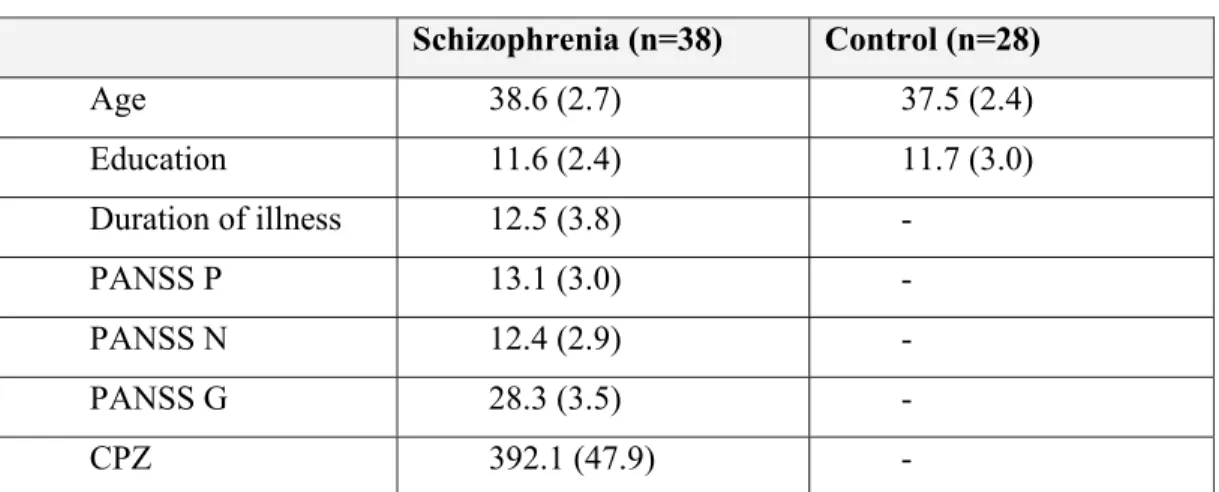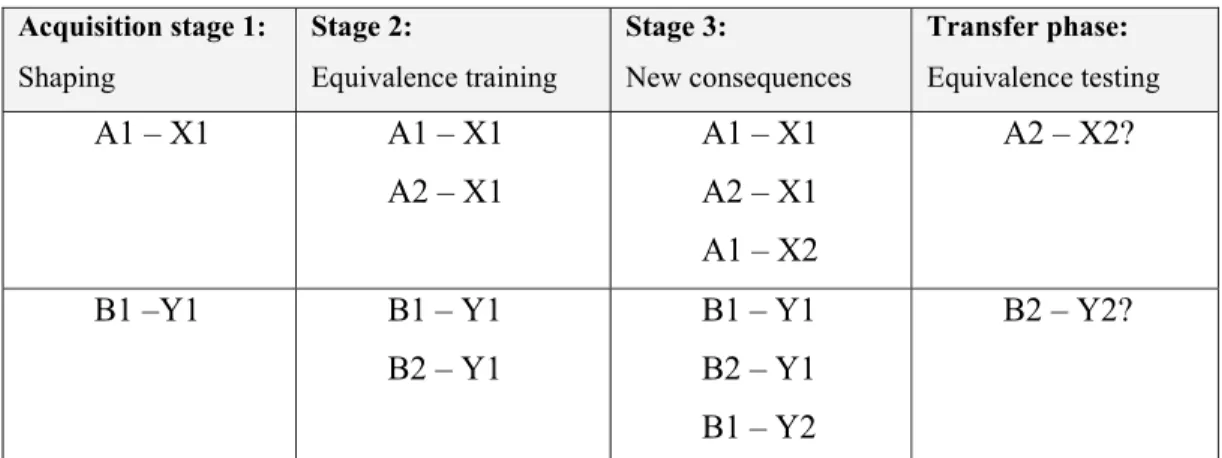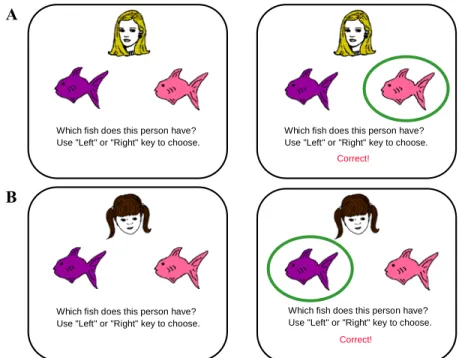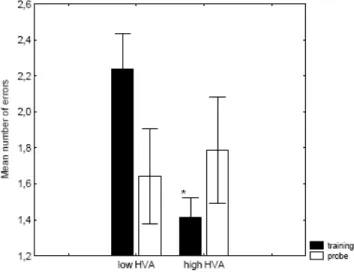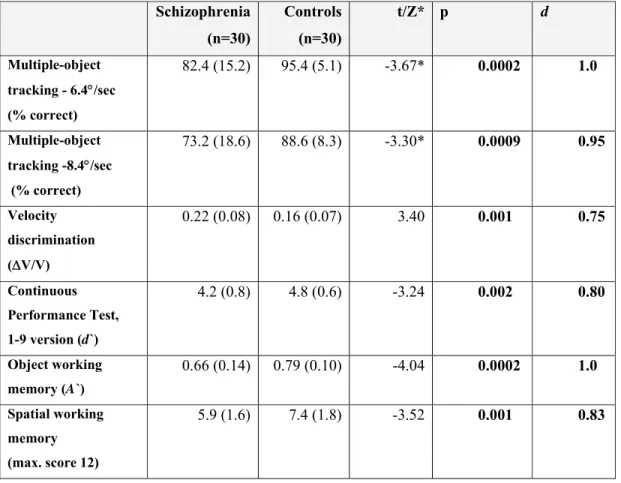The aim of the research was to investigate interactive memory systems, learning and attention in schizophrenia and thereby better understand the pathophysiological background of the disorder. Seven cognitive domains have been identified as commonly impaired in schizophrenia patients: attention/vigilance; working memory; reasoning and problem solving;. The initiative is articularly important because the current paradigms have several shortcomings, since in the past decades neuropsychological tests developed for the examination of patients with brain damage have been used in schizophrenia patients.
The most ambitious goal of research into neuropsychological functioning in schizophrenia is to identify a single cognitive dysfunction or pattern of dysfunction from which the various neuropsychological abnormalities emerge (Hemsley, 2005). Parallel to the above neuropsychological research, it has become clear in recent decades that multiple brain structures are affected in schizophrenia.
Neurochemical hypotheses such as dopamine hypothesis are one of the oldest in schizophrenia research. A consistent observation has associated schizophrenia with
First hippocampal theories postulate that impaired information processing in schizophrenia (eg, inability to ignore irrelevant stimuli) and psychotic symptoms (fixed false beliefs) are caused by hippocampal dysfunction (eg, Krieckhaus et al., 1992). Hippocampus and related MTL may be important for the ability to generalize the learned information (Meyers et al., 2002). In contrast, many non-declarative (implicit) memory functions, such as gradual acquisition of skills and habits (based on stimulus-response, sequence and category learning) are linked to the basal ganglia (BG) (Schacter et al., 2000; Squire, 2004).
It has also been confirmed that encoding and retrieval processes are more affected than long-term storage (eg Gold J et al., 1992). A baseline functional neuroimaging study of memory recall showed impaired hippocampal recruitment but normal prefrontal activation in schizophrenia (Heckers et al., 1998). Nevertheless, research suggests that this aspect of memory is relatively preserved in patients with schizophrenia (eg, Kéri et al., 2000; Weickert et al., 2002).
An analysis by Dickinson et al (2007) showed that the severity of attention deficits may depend on the characteristics of the task, suggesting that while schizophrenia is associated with moderate deficits in attentional processes responsible for alerting (which evidenced by all types of continuous tasks), other aspects of the task may also contribute to poorer performance.
OBJECTIVES
On each trial of the experiment, the animated character (nicknamed "Kilroy") appeared in a room with three colored doors (Fig. 1). In each room, the participant uses the computer mouse to move the cursor and to click on one of the doors. Kilroy then moves back to the center of the room, awaiting the subject's next choice.
In each room, click on the color card of the door you think is unlocked. Five patients did not use antipsychotics because of the side effects (sedation and weight gain). In the acquisition phase of the task, participants learn six pairs of stimulus-response associations.
At the beginning of the experiment, the following instruction appeared on the screen: "Welcome to the experiment. First you will have to guess." The experimenter read the instructions aloud to the participant and then click the mouse button for him.General intellectual functions were assessed with the Wechsler Adult Intelligence Scale-Revised (WAIS-R) (Wechsler, 1981).
General intellectual abilities were assessed using the Wechsler Adult Intelligence Scale-Revised (WAIS-R) (Wechsler, 1981). A modified version of the change detection task was used to investigate object working memory (Gold et al., 2003). In the first regression analysis, predictors were clinical symptoms (PANSS-scores), disease duration and chlorpromazine-equivalent dose of antipsychotics.
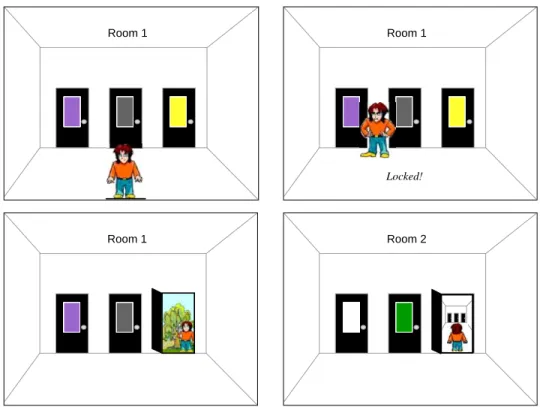
RESULTS
In contrast, the median split analysis indicated no differences between participants with low and high HVA in the probe phase (p=0.72) (Fig. 5). The relationship between the mean number of errors in the training and probe phase of the 'chain' task and plasma HVA levels. An analysis of the linear trend showed that the number of errors increased linearly as a function chaining associations in participants with low HVA (F p<0.001).
Average number of errors from the four phases (four rooms) of the training procedure. Error bars show 95% confidence intervals. The mean number of errors during the acquisition phase was 8.8 (SE=1.2) in the schizophrenia group and 7.7 (SE=1.8) in the control group. Planned comparisons with F-tests showed that controls had similar error rates for new and old associations (p = 0.10), whereas patients with schizophrenia performed significantly worse on new associations (F p < 0.0001 ).
Tukey HSD post-hoc tests confirmed this robust dissociation, revealing that schizophrenia patients made more errors in the case of new associations (p=0.0002) but not in the case of old associations (p=0.9) compared to the control group. Individual data revealed that 3 of the 28 controls (10.7%) scored below the median of the total control-patient-total sample in cases of new association, whereas this frequency was in patients with schizophrenia. The CVLT scores showed a selective negative correlation with the error rate in case of new associations during the transfer phase (summary scores from trials 1-5: Pearson's r=- 0.66, p<0.05; long-term delay: Pearson's=-0.64 p< 0.05).
There was a positive correlation between the mean number of errors in the acquisition phase and daily chlorpromazine equivalent doses (Pearson's r=0.76, p<0.05) (Fig. 7). However, in the case of multi-object tracking data, Levene's test showed a significant deviation from homogeneity of variance (p<0.01), therefore these data were compared with Mann-Whitney U tests. In the slow condition, none of the factors reached the level of statistical significance (p>0.1).
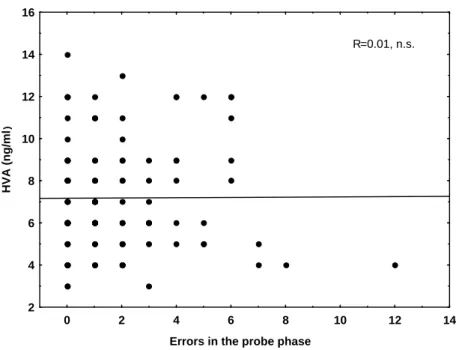
DISCUSSION
The objective of the probe phase was to determine whether participants had learned the correct door in its correct place in the sequence. These patients, however, show a number of errors during the probe phase, which is not seen in PD patients (Nagy et al., 2007). Despite this fact, data indicate that there is a reliable relationship between peripheral metabolites and brain neurotransmitter levels (Amin et al., 1992).
These drugs, which were administered to the majority of patients participating in this study, may cause Parkinsonian symptoms by disrupting dopaminergic neurotransmission in the nigro-striatal system and may lead to impaired cognitive skill learning in the "weather forecasting task" (Beninger et al ., 2003). Indeed, in a previous study, patients with Parkinson's disease showed impaired stimulus-response learning during the acquisition phase, while transfer phase performance was spared ( Myers et al., 2003 ). This is the opposite pattern compared to that found in patients with hippocampal atrophy who performed well during the acquisition phase but had marked difficulties in the case of new associations during the transfer phase (Myers et al., 2003).
There was no significant difference between groups in the GC-dependent acquisition phase, probably due to the low dose of antipsychotics. However, the subcortical profile in schizophrenia has been found to be inconsistent across ability domains and likely not due to stable structural or functional brain deficits in the fronto-striatal system (Harvey et al., 2002). Indeed, using the same paradigm, Weiler et al (2009) found a mild generalization impairment in subjects with schizophrenia.
In the posterior parietal and frontal cortex, increased activation was found during visual object tracking tasks (Culham et al. Jovicich et al., 2001), and there is increasing evidence from neuroimaging studies that this fronto-parietal network is severely affected in schizophrenia (Belger ) and Dichter, 2006; Kircher and Thienel, 2005). However, it is likely that the non-significant result for spatial working memory in the controls may simply reflect the reduced range of object tracking scores in the control sample compared to the patient sample. However, emerging evidence suggests that working memory is necessary for multiple object tracking (Allen et al., 2006).
CONCLUSIONS
With this new paradigm, genetic aspects of cognitive impairment and drug effects on different memory systems can also be investigated in the future. We found that multifocal attentional capacity is impaired in schizophrenia, and that this is specifically associated with motion perception and spatial working memory. Therefore, the cortical network dysfunction related to motion perception and spatial working memory may play an important role in multifocal attentional dysfunction, that is, related to a complex cortical network that includes motion sensitive regions (V5) and areas responsible for spatial processing (posterior parietal cortex). ), eye movements and working memory (prefrontal cortex, including the frontal eye field).
Since many aspects of multiple-object tracking are not mediated by higher-level executive functions, and low-level visual "indexing" processes may play a crucial role during this task, further studies are warranted to elucidate the complex relationship between low-level sensory processes, different domains of attention , and multiple-object tracking functions in normal and pathological conditions. The experiments have their limitations regarding small sample size, absence of electropsychological, neuroimaging or genetic testing. It is also important to keep in mind the relative specificity of neuropsychological tests with respect to the exact underlying neurological focus.
Nevertheless, the importance of the issues described in the thesis is also endorsed by the CNTRICS end-task selection, which has identified both relational coding and reinforcement learning as a key construct for further long-term memory research in schizophrenia (Ragland JD et al, 2009). ) similar to attentional control tasks (Neuchterlein KH et al, 2009). We also need to be very careful when evaluating the effect of antipsychotic drugs on cognitive function because our results are not based on randomized controlled trials and that kind of data with a small sample size and an uncontrolled setting can lead to bias. First, consideration is given to whether cognitive impairment should be included in the diagnostic criteria for schizophrenia in DSM-V.
Inclusion of this criterion may increase clinicians' awareness of cognitive impairment, which may lead to more accurate prognosis, better treatment outcomes, and a clearer diagnostic signal to background genetic and biological studies (Keefe, 2008). Finally, the development of treatments for cognitive impairment in schizophrenia has been identified as the most important challenge facing psychiatry at the beginning of the 21st century. Treatment of cognitive deficits with pharmacotherapy or special cognitive rehabilitation programs offers an opportunity to improve the prognosis and functional outcome of patients with schizophrenia.
SUMMARY
High-dose first-generation antipsychotics can disrupt BG-dependent learning by blocking dopaminergic neurotransmission in the nigrostriatal system.
ÖSSZEFOGLALÁS
A tanult ekvivalencia teszttel elsőként, ugyanezen paradigmával igazoltuk, hogy a skizofréniában szenvedők csökkent teljesítményt mutatnak a mediotemporális lebenyektől függő tanulási folyamatokban, míg a bazális ganglionokhoz kapcsolódó tanulásuk megkímélt. Ugyanakkor a nagy dózisban alkalmazott első generációs antipszichotikumok a nigrosztratális dopaminerg transzmisszió gátlásával károsíthatják a bazális ganglionokhoz kapcsolódó tanulási folyamatokat.
LIST OF PUBLICATIONS
ACKNOWLEDGEMENTS
